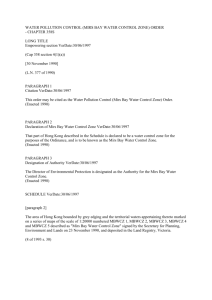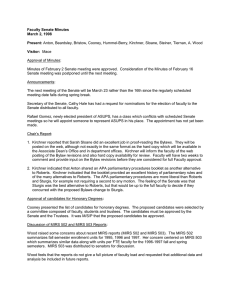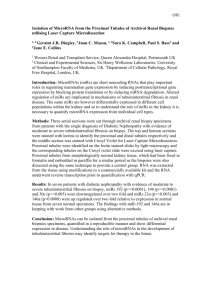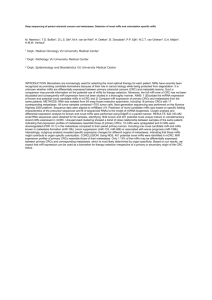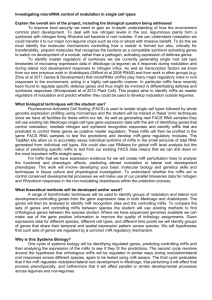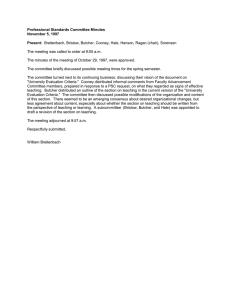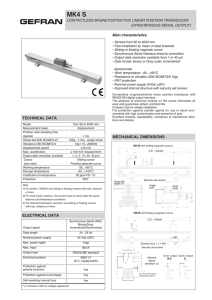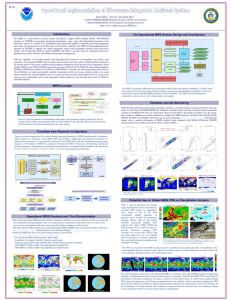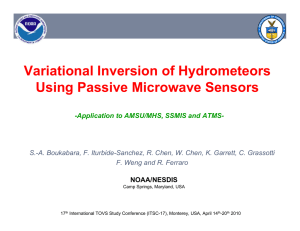Document 12289447
advertisement
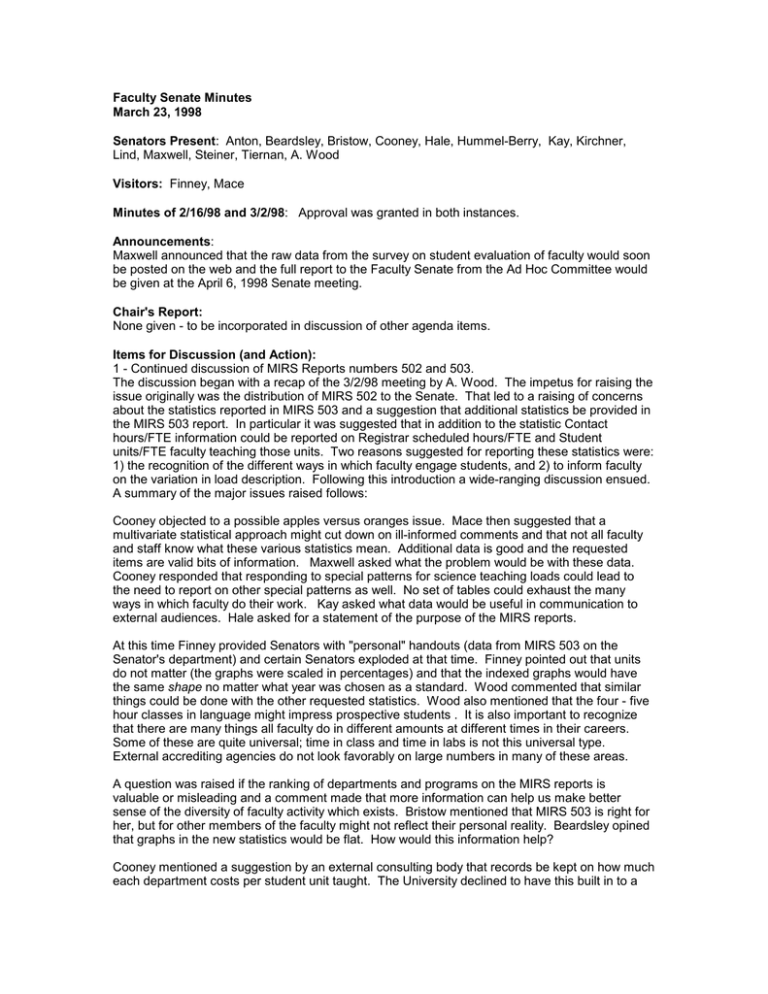
Faculty Senate Minutes March 23, 1998 Senators Present: Anton, Beardsley, Bristow, Cooney, Hale, Hummel-Berry, Kay, Kirchner, Lind, Maxwell, Steiner, Tiernan, A. Wood Visitors: Finney, Mace Minutes of 2/16/98 and 3/2/98: Approval was granted in both instances. Announcements: Maxwell announced that the raw data from the survey on student evaluation of faculty would soon be posted on the web and the full report to the Faculty Senate from the Ad Hoc Committee would be given at the April 6, 1998 Senate meeting. Chair's Report: None given - to be incorporated in discussion of other agenda items. Items for Discussion (and Action): 1 - Continued discussion of MIRS Reports numbers 502 and 503. The discussion began with a recap of the 3/2/98 meeting by A. Wood. The impetus for raising the issue originally was the distribution of MIRS 502 to the Senate. That led to a raising of concerns about the statistics reported in MIRS 503 and a suggestion that additional statistics be provided in the MIRS 503 report. In particular it was suggested that in addition to the statistic Contact hours/FTE information could be reported on Registrar scheduled hours/FTE and Student units/FTE faculty teaching those units. Two reasons suggested for reporting these statistics were: 1) the recognition of the different ways in which faculty engage students, and 2) to inform faculty on the variation in load description. Following this introduction a wide-ranging discussion ensued. A summary of the major issues raised follows: Cooney objected to a possible apples versus oranges issue. Mace then suggested that a multivariate statistical approach might cut down on ill-informed comments and that not all faculty and staff know what these various statistics mean. Additional data is good and the requested items are valid bits of information. Maxwell asked what the problem would be with these data. Cooney responded that responding to special patterns for science teaching loads could lead to the need to report on other special patterns as well. No set of tables could exhaust the many ways in which faculty do their work. Kay asked what data would be useful in communication to external audiences. Hale asked for a statement of the purpose of the MIRS reports. At this time Finney provided Senators with "personal" handouts (data from MIRS 503 on the Senator's department) and certain Senators exploded at that time. Finney pointed out that units do not matter (the graphs were scaled in percentages) and that the indexed graphs would have the same shape no matter what year was chosen as a standard. Wood commented that similar things could be done with the other requested statistics. Wood also mentioned that the four - five hour classes in language might impress prospective students . It is also important to recognize that there are many things all faculty do in different amounts at different times in their careers. Some of these are quite universal; time in class and time in labs is not this universal type. External accrediting agencies do not look favorably on large numbers in many of these areas. A question was raised if the ranking of departments and programs on the MIRS reports is valuable or misleading and a comment made that more information can help us make better sense of the diversity of faculty activity which exists. Bristow mentioned that MIRS 503 is right for her, but for other members of the faculty might not reflect their personal reality. Beardsley opined that graphs in the new statistics would be flat. How would this information help? Cooney mentioned a suggestion by an external consulting body that records be kept on how much each department costs per student unit taught. The University declined to have this built in to a new record keeping system. This would be an example of a statistic having a potentially high cost (to some departments) if it were available. Finney commented that Puget Sound does not collect faculty workload reports as many schools do. MIRS 503 uses data which reflect what students leave with - units. The requested items seem to push the institution to a "faculty workload" orientation. A discussion of costs of securing and preparing additional reports took place. Finney also mentioned that the registrars office handles the enrollment of students in laboratory sections as a courtesy to the departments with laboratories. Comments on the "new statistics" darted around: Is Beardsley correct? (The shared opinion is "Yes.") If so, is this new information a one-time calculation and not an on-going expense? (Again a "Yes" - weaker this time.). Is the point to see that we are all working hard? Hale raised the question of whether the MIRS reports are used in faculty allocation. Cooney indicated that this would almost never be the case for tenure-line appointments, but might well indicate areas where the institution needed to respond to special enrollment pressure so that faculty do not just have to work harder to meet demand. The current statistics might point out cataclysmic shifts. New tenure lines are more apt to be the result of curricular decisions. The discussion returned to nature of the problems associated with MIRS 503. Are they motivated by budget, faculty load, faculty allocation. The response was that more data might help. It could clarify for faculty in the "two cultures" what is going on in the other culture. The additional information could aid in the understanding of these differences. Bristow asked why ranks were used. Finney said that using standard deviation above and below the mean might serve just as well. It was noted that MIRS 503 reports were not distributed to departments this last year. Clarification: MIRS 503 will continue to be distributed in the future. A discussion of the role of labs took place; their role, the effect of increased enrollments in courses with labs, did labs count in reported statistics ( Finney - Yes and A. Wood - No). Rather than circle around for a third time A. Wood made the following motion: Motion: (M/S/P) The Faculty Senate request the inclusion of a footnote in MIRS 503 which indicates that time spent in laboratories is not reflected in the calculations in the report. There was some additional discussion as to what columns in the report should be associated with the footnote. It was also suggested that a cover letter go out with the report admonishing readers against misuse of the information in the report. It was also pointed out that no one is complaining about workload. Update on Election in Progress: As of this date no nominated member of the faculty had agreed to run for Faculty Senate Chair. It was suggested that an e-mail be sent to faculty requesting additional nominees for Senate Chair, and that nominators check with their nominees first. It was noted that this is not the first time that an initial call for candidates has resulted in an "empty slate." Update on Bylaws Revision: Kirchner indicated that no members of the faculty had responded to the call for comments on the proposed revisions. To remedy this Cooney asked why the 1903 Articles of Incorporation are quoted. As a consequence of the discussion of the question of what should occur next , it was decided to add the Bylaws revisions to the queue for consideration by the faculty. There was a sentiment that we should attempt to get this issue to a vote this spring, and a reminder of the need for two readings and a circulation of written copy. Adjournment: (M/S/P) The motion to adjourn came at 5:15 P.M. Respectfully submitted, R. Bruce Lind
